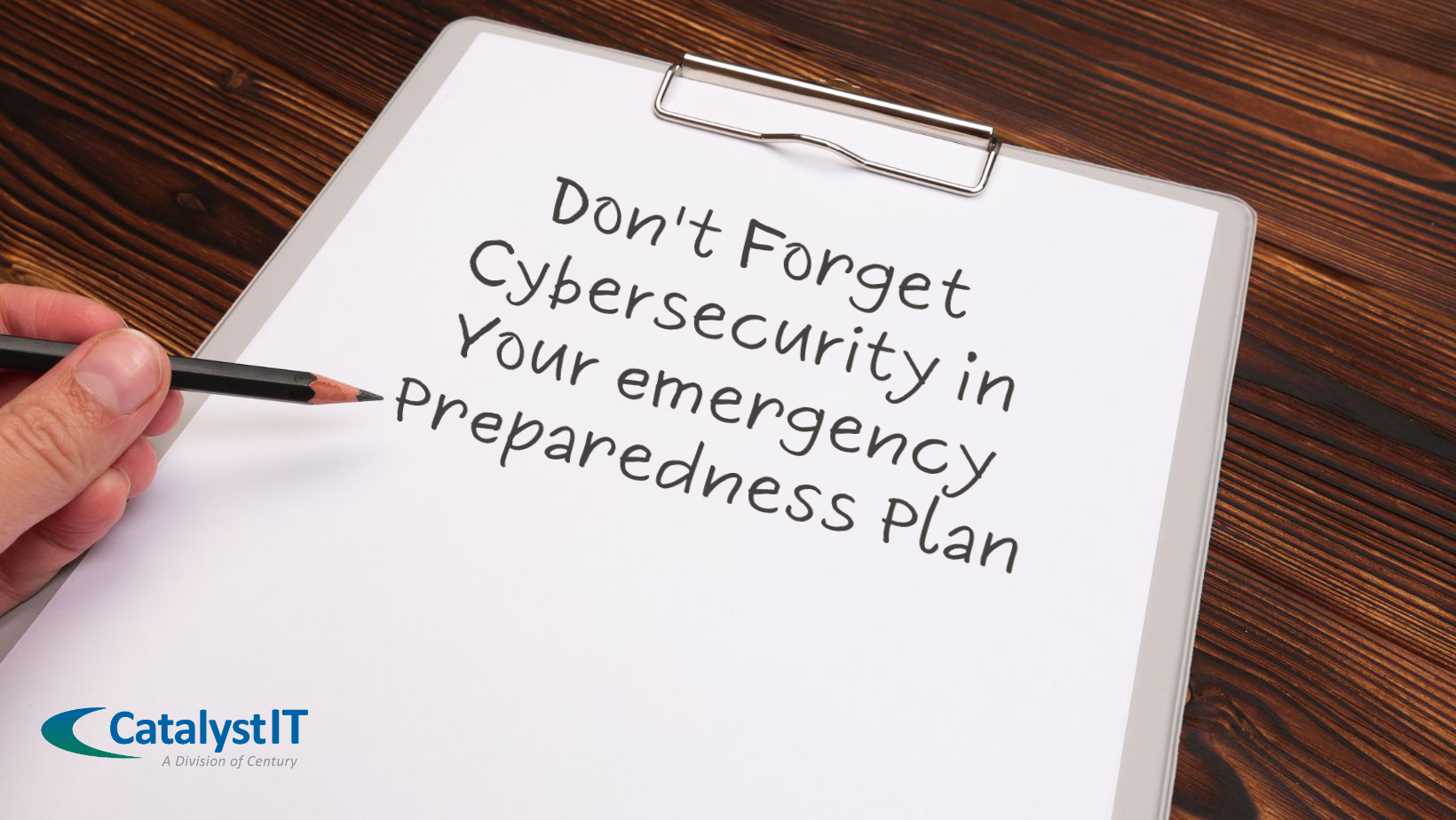Don’t Forget Cybersecurity in Your Emergency Preparedness Plan

A disaster preparedness plan helps businesses withstand any calamity. However, many businesses are unaware that a cybersecurity strategy is also crucial for building a robust disaster preparedness plan.
By incorporating cybersecurity into your emergency preparedness plan, you can better protect your business during critical incidents and minimize the impact of cyberthreats. This will help you enhance your business’s resilience, ensuring you’re better equipped to function in the face of unexpected challenges. Don’t forget cybersecurity in your emergency preparedness plan!
Best practices for effective disaster preparedness planning in IT security
Here are some practical tips for improving your organization’s disaster preparedness planning:
1. Protect your IT infrastructure and data
Your data is a gold mine for cybercriminals, and they’ll do anything to get their hands on it. That’s why it’s important to strengthen your IT infrastructure to withstand any disaster. Failing to implement adequate measures to protect your data could also attract fines and lawsuits.
Pro tip
- Firewalls, intrusion detection systems and encryptions can strengthen your IT security.
- Implementing a process to fix and update software patches regularly will help you avoid security vulnerabilities.
2. Back up critical data
Data loss can occur for many reasons, including cyberattacks and natural disasters. If your organization has not correctly backed up its data, recovery can be costly, time-consuming and seemingly impossible. If you want your business to survive, your disaster preparedness plan must ensure that your data remains clean, available and restorable.
Pro tip
- Regularly back up critical data.
- Back up your data off-site or in the cloud.
- Test backups regularly to verify their integrity.
3. Improve employee awareness
Your employees are your weakest link only if they don’t have proper training. By conducting regular security awareness training, you can improve their knowledge. It also increases your employees’ ability and willingness to follow security protocols during an emergency.
Pro tip
- Train your employees to identify phishing attempts, report suspicious activities and follow security protocols.
- Routinely test employee preparedness through simulated scenarios or drills.
4. Review insurance policies
Insurance plays a critical role in promoting disaster resilience. It can help speed up your recovery after an incident. It’s a good idea to have property insurance, business interruption insurance and cybersecurity insurance to cover all bases.
Pro tip
- Routinely review insurance policies to ensure you have proper coverage for potential risks and disasters.
- Maintain records of your assets, inventory and financial transactions to facilitate insurance claims and recovery efforts.
- Take the help of an insurance expert to understand current coverage and determine if additional coverage is required.
We can help you outlast any disaster
It can be challenging to build a comprehensive disaster preparedness plan that is robust and includes a thorough cybersecurity strategy on your own. By partnering with an experienced IT service provider like us, your business can become resilient and outlast any disaster.
Contact us today for a free consultation on how we can help you build a solid disaster preparedness plan.


